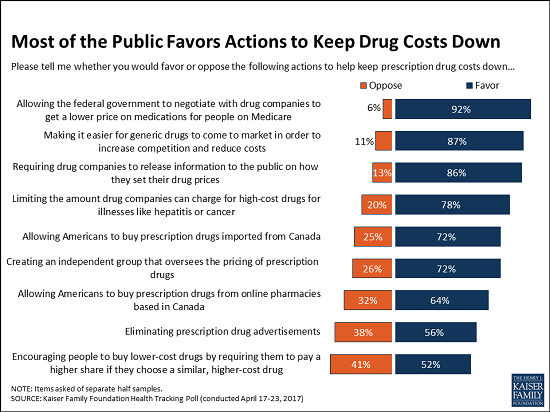
Making the case for personal importation of safe, affordable prescription medicines from licensed, registered pharmacies in Tier One Countries. Rx for American Health is published by Daniel Hines, an international award-winning communicator with five decades of experience, and the publisher of www.TodaysSeniorsNetwork.com and www.BoomersNewsOnline.com. He also works with progressive senior advocacy groups across the nation to promote the health and well-being of America’s aging population.
Kaiser Poll Show Support for Personal Imporatation

Friday, December 23, 2011
Download our new Android App
Monday, December 19, 2011
More than 1 in 8 Americans have trouble affording prescription drugs
WASHINGTON, December 19, 2011– The proportion of Americans reporting problems affording prescription drugs remained level between 2007 and 2010, with more than one in eight going without a prescribed drug in 2010, according to a national study released today by the Center for Studying Health System Change (HSC). Despite the flat numbers, the news isn’t necessarily good.
The most vulnerable people - the uninsured, those with low incomes, people in fair or poor health and those with multiple chronic conditions - continued to face the most unmet prescription needs, according to findings from HSC’s 2010 Health Tracking Household Survey, a nationally representative survey with information on 17,000 people.
Funded by Robert Wood Johnson Foundation, the survey for the first time included a cell phone sample to account for the growing number of households without a landline phone. Response rates were 45 percent for the landline sample and 29 percent for the cell phone sample.
[See also: Prescription co-pays rise for healthcare workers]
Although the percentage of consumers who had trouble paying for drugs leveled off, that might be an indication that they did not see a doctor to get a prescription.
“The stability may reflect the fact that fewer people went to the doctor and received a prescription, making it possible that the results are not capturing the full extent of affordability problems,” said Ellyn R. Boukus, HSC health research analyst and coauthor of the study with HSC Senior Researcher Emily R. Carrier, MD.
“While prescription affordability problems did not worsen overall, rates remained high (more than one in eight Americans went without a prescribed drug),” continued Boukus. “This was especially true for the most vulnerable groups, whose reliance on prescription drugs is highest. About half of people in fair or poor health and almost 70 percent of those suffering from multiple chronic conditions reported foregoing a prescription in 2010 because of cost concerns.”
Given the large increase in the uninsured population - from 42.8 million in 2007 to 51.7 million in 2010 - and financial pressures caused by the severe economic recession and sluggish recovery, the study points out that it is somewhat surprising that drug affordability problems did not increase.
One factor that likely made some prescriptions more affordable for patients is the loss of patent protection for several major branded drugs and additional shifts toward generic use.
“More patent expirations are on deck for some widely used drugs such as Plavix (for heart disease) and Actos (for diabetes), which will help to improve affordability,” said Boukus. “However, in the short term, it is possible that prices for brands that are soon going off patent will rise as drugmakers take advantage of their remaining exclusivity.”